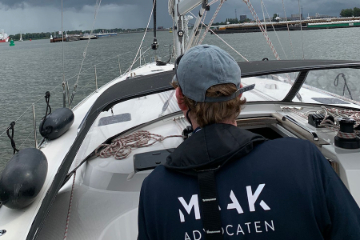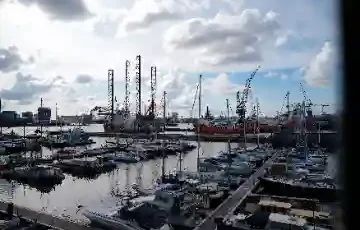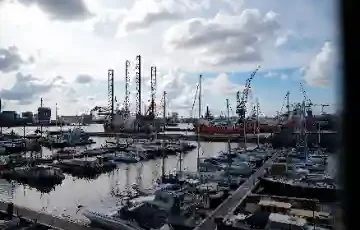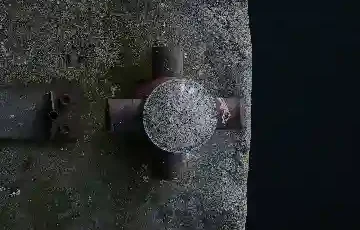
A yacht dispute arises when buyer and seller cannot agree on defects, ownership issues, or contractual obligations. In the Netherlands, these conflicts fall under Article 7:17 of the Dutch Civil Code (conformity regulation) and require immediate action: 30% of yacht disputes escalate because buyers report defects too late or lack crucial documentation. This regulation serves as default law, allowing parties to deviate contractually—except in consumer purchases.
What are the most common causes of yacht disputes in the Netherlands?
Yacht disputes typically arise from missing documentation, hidden defects, unclear ownership rights, VAT issues, or ambiguous warranty conditions. Therefore, you must conduct thorough due diligence as a buyer before proceeding with purchase.
The Dutch yacht market presents specific risks. Many owners lack a standard certificate of ownership or a conclusive Bill of Sale. Larger vessels register with the Dutch Land Registry (Kadaster), while smaller boats often change hands informally. This ambiguity directly leads to ownership conflicts that generate €15,000 to €25,000 in legal costs on average. Moreover, Dutch law requires you as a buyer to conduct your own investigation—failing to do so significantly weakens your legal position.
Sellers have a duty to disclose abnormal defects, but only to the extent these do not qualify as “normal.” However, you cannot rely entirely on this disclosure. A survey by an independent marine surveyor remains essential, because judges typically follow a technical expert’s opinion over party statements. Additionally: CE certification is mandatory for all recreational vessels in the European Union, but approximately 12% of used yachts display electrical systems that fail to meet CE standards—with insurance complications as a direct consequence.
Which documents should you verify before purchasing a yacht under Dutch law?
Collect at minimum the original purchase invoice, VAT exemption certificate, warranty documents, maintenance records, and Land Registry extract (if applicable) to prevent ownership disputes and tax problems. These documents not only prove ownership but also protect you against subsequent claims.
For ownership verification, request the original purchase invoice, bank statements evidencing payment, previous purchase agreements, a manufacturer’s declaration, and—if registered—a notarial deed or Land Registry extract. These documents substantiate the chain of ownership and reveal any liens or seizures. For example: an Amsterdam entrepreneur discovered after purchase that his yacht remained encumbered with an €80,000 mortgage lien because he had not conducted Land Registry research.
Regarding VAT matters, you need the original invoice and a VAT exemption certificate from Dutch Customs. This “VAT exemption declaration” applies throughout Europe and prevents double taxation. Additionally, request a “declaration of non-registration” from the Land Registry, confirming the vessel is free from legal encumbrances. Furthermore, do not forget the following:
- User manuals and specification brochures
- Warranty certificates (minimum two years for new yachts)
- Maintenance records emphasizing engine servicing
- Recent maintenance costs and repair invoices
- CE certification documents and declaration of conformity
Ultimately, comprehensive documentation protects you against the risk that defects emerge only after delivery, leading to costly procedures that average 18 months in duration.
How quickly must you report defects to the seller under Dutch law?
Report defects immediately in writing to the seller as soon as you discover them—late reporting causes you to forfeit your rights to repair, price reduction, or contract dissolution. The complaint obligation under Article 6:89 of the Dutch Civil Code requires “prompt action,” typically interpreted as within several days to maximum two weeks after discovery.
This short timeframe applies because sellers otherwise invoke forfeiture: if you continue sailing for months without complaint, you suggest the defect is acceptable. A court ruled, for instance, that a buyer who waited three months to complain about engine problems had forfeited his claim—despite the damage amounting to €40,000. Consequently, you must report each newly discovered defect separately, even if you have previously submitted other complaints.
Note: standard terms such as the HISWA conditions often contain stricter deadlines. These conditions may, for example, prescribe a complaint period of seven days or impose an absolute limitation period of one year. Although unreasonably onerous clauses can be annulled by courts, caution remains advisable. Therefore, consult a specialized maritime lawyer in the Netherlands immediately when the seller refuses to cooperate with repair or replacement.
Moreover, you must continue caring diligently for the yacht during settlement negotiations. From the moment you consider dissolution, you bear the “duty of care as a proper debtor”—neglect can reduce your damages compensation.
What happens upon dissolution of the purchase contract in Dutch law?
Upon dissolution, the seller must refund the purchase price and takes back the yacht in its current condition—depreciation through normal aging falls to his account, but damage caused by demolition work is offset by the court. This regulation follows from Article 7:10 paragraphs 3 and 4 of the Dutch Civil Code.
The right to dissolution is available when the seller culpably defaults on his obligations. You choose between complete dissolution, partial dissolution, performance, or damages. An Amsterdam case illustrates this: the buyer demanded a €50,000 reduction in purchase price due to construction defects, but the seller refused. Subsequently, the buyer opted for complete dissolution—a choice the court respected because the seller himself had let the opportunity for damage mitigation pass.
After dissolution, the seller bears the risk of destruction or deterioration of the yacht, unless you as buyer are at fault. Normal wear and depreciation from idle time fall to the seller’s account. Conversely, you remain liable for damage through your own actions, such as further demolition or renovation work. Judges estimate this damage ex aequo et bono—in a recent ruling, the Court of Appeal Arnhem-Leeuwarden assessed the damage for unnecessary demolition work at €10,000.
Maintenance necessary to preserve the yacht does not qualify as “damages” and you cannot recover it. It is part of your duty of care. Specifically, this means: storage, insurance, and basic maintenance remain your responsibility until dissolution is settled.
What role does a marine survey play in preventing disputes under Netherlands law?
A professional survey by an independent surveyor prevents disputes because it objectively documents technical defects—judges typically follow the opinion of a recognized expert over party statements. Commission this inspection before making any payment.
Dutch law imposes a duty of investigation on you as buyer. This means: you must thoroughly inspect the yacht before purchase. A thorough survey report satisfies this duty and constitutes strong evidence in potential proceedings. A surveyor examines, for example, the condition of hull, engine, electrical systems, CE certification, and structural integrity. This report must be sufficiently detailed that even a judge without maritime knowledge can understand the findings.
Approximately 65% of serious yacht disputes arise in transactions without prior survey. Buyers rely excessively on visual inspection or seller information. However, hidden defects such as osmosis, corrosion, or engine damage often remain invisible to laypeople. A survey typically costs between €1,500 and €5,000 depending on yacht size—a fraction of the average damage in disputes.
Important: never pay a broker in advance before the survey is completed. Some brokers employ standard terms obligating you to purchase despite negative survey results, making recovery of the deposit complex. Therefore, make explicitly clear in the preliminary contract that payment occurs only after survey approval.
Additionally, you can have the court appoint an independent expert. This prevents discussions about “party expertise” and strengthens your position if proceedings ensue.
How do you regulate warranties and liability in the purchase contract under Dutch law?
Stipulate at minimum two years warranty for new yachts and have exactly specified which components and defects are covered—standard terms excluding statutory rights are often void under Dutch or European consumer law. Negotiate warranty conditions actively before signing.
For new yachts, a statutory warranty period of two years applies if you purchase as a consumer. During the first six months, you enjoy additional protection: the seller must prove a defect did not exist at the moment of delivery. This burden of proof thus shifts to the seller. However, for commercial purchases, this consumer protection does not apply, making negotiation crucial.
Verify exactly what falls under warranty. Some sellers exclude wear-and-tear components or limit warranty to structural defects. A proper warranty arrangement covers at minimum engine, electronics, hull, and essential installations. For example: a Rotterdam entrepreneur discovered his warranty excluded engine damage when using “unauthorized fuel”—a clause that became clear only upon €30,000 in damage.
Standard terms limiting statutory rights may be void. Article 6:233 of the Dutch Civil Code determines that unreasonably onerous clauses in standard terms are voidable. Clauses restricting your complaint period to less than two months or categorically excluding damages often fail judicial scrutiny. Consequently, it is advisable to have the draft contract reviewed by a specialized contract law lawyer in the Netherlands before signing.
Furthermore, make the applicable law explicit. Dutch law offers buyers strong protection and a balanced system for dispute resolution. You can agree with the seller that Dutch law applies, even if the seller is established abroad. This choice prevents ambiguity and significantly reduces legal complexity.
What does a yacht dispute cost on average and how does the procedure proceed in the Netherlands?
Yacht disputes cost on average €15,000 to €25,000 in legal fees and take 12 to 18 months via court or arbitration—prevention through thorough due diligence and contract review saves you these investments. Therefore, always begin with amicable settlement before litigating.
Most yacht disputes resolve through negotiation or mediation. These routes are faster and cheaper than judicial proceedings. Mediation typically takes two to four months and costs between €3,000 and €7,000. When negotiation fails, arbitration or court proceedings remain. Arbitration offers confidentiality and speed but costs on average €20,000 to €40,000 for disputes exceeding €100,000.
Court proceedings proceed via the civil court. In first instance, the Amsterdam District Court or the court where the seller resides handles the case. These proceedings take 12 to 24 months. Appeal to a Court of Appeal adds another 12 to 18 months. Expert examination within proceedings—for instance by a court-appointed surveyor—extends the timeline by three to six months.
Costs consist of court fees (€3,000 to €8,000 depending on the claim), lawyer fees (€150 to €400 per hour), and expert costs (€5,000 to €15,000 for technical investigation). The losing party compensates a portion of these costs via the liquidation tariff, but this rarely covers actual costs. For example: in a €150,000 dispute, the liquidation tariff amounts to only €8,000, while actual lawyer fees may reach €30,000.
Prevention therefore remains your best strategy. Invest €2,000 to €5,000 in a thorough survey and contract review beforehand. This prevents you from losing tens of thousands of euros years later in proceedings. Consult a maritime lawyer in the Netherlands at the first signs of a dispute who can assess your position and present strategic options.
What specific legal risks apply to foreign buyers in the Netherlands?
Foreign buyers face additional risks due to ambiguity about VAT obligations, registration requirements, and applicable law—make Dutch law explicitly applicable and verify VAT status through official Customs documents. These provisions prevent double taxation and jurisdictional conflicts.
VAT issues constitute a common pitfall. Within the EU, the principle of single VAT payment applies, but sellers can abuse this. Always request the VAT exemption certificate from Dutch Customs confirming VAT has been paid. Without this document, you risk the Dutch tax authorities imposing VAT again—in 2023, this led to additional assessments averaging €45,000 per case.
Registration requirements differ per yacht size. Smaller recreational vessels require no Land Registry registration, but larger yachts (typically above 20 meters) do. Foreign buyers often underestimate that Dutch registration is necessary for insurance and legal navigation in Netherlands territory. Therefore, inquire with the Land Registry or RDW (for fast vessels) which registrations apply.
Contractually, you can agree with the seller that Dutch law governs. This prevents you from having to litigate under foreign law or international treaties. Dutch maritime law offers a balanced framework with clear case law regarding ownership transfer, defect regulation, and dissolution. Make this choice of law explicit in Article 1 of the purchase contract and exclude international arbitration if you desire certainty via the Dutch court.
Additionally, for faster vessels, an RDW permit applies. Verify the yacht holds valid Dutch navigation certificates and that the seller transfers all original documents. Otherwise, you risk fines or inability to navigate legally.
Contact a specialized yacht lawyer in Amsterdam
Contact a specialized yacht lawyer in Amsterdam immediately when you doubt ownership documentation, contract terms, or defects in your yacht—preventive legal guidance costs a fraction of subsequent litigation expenses and protects your investment from day one.









